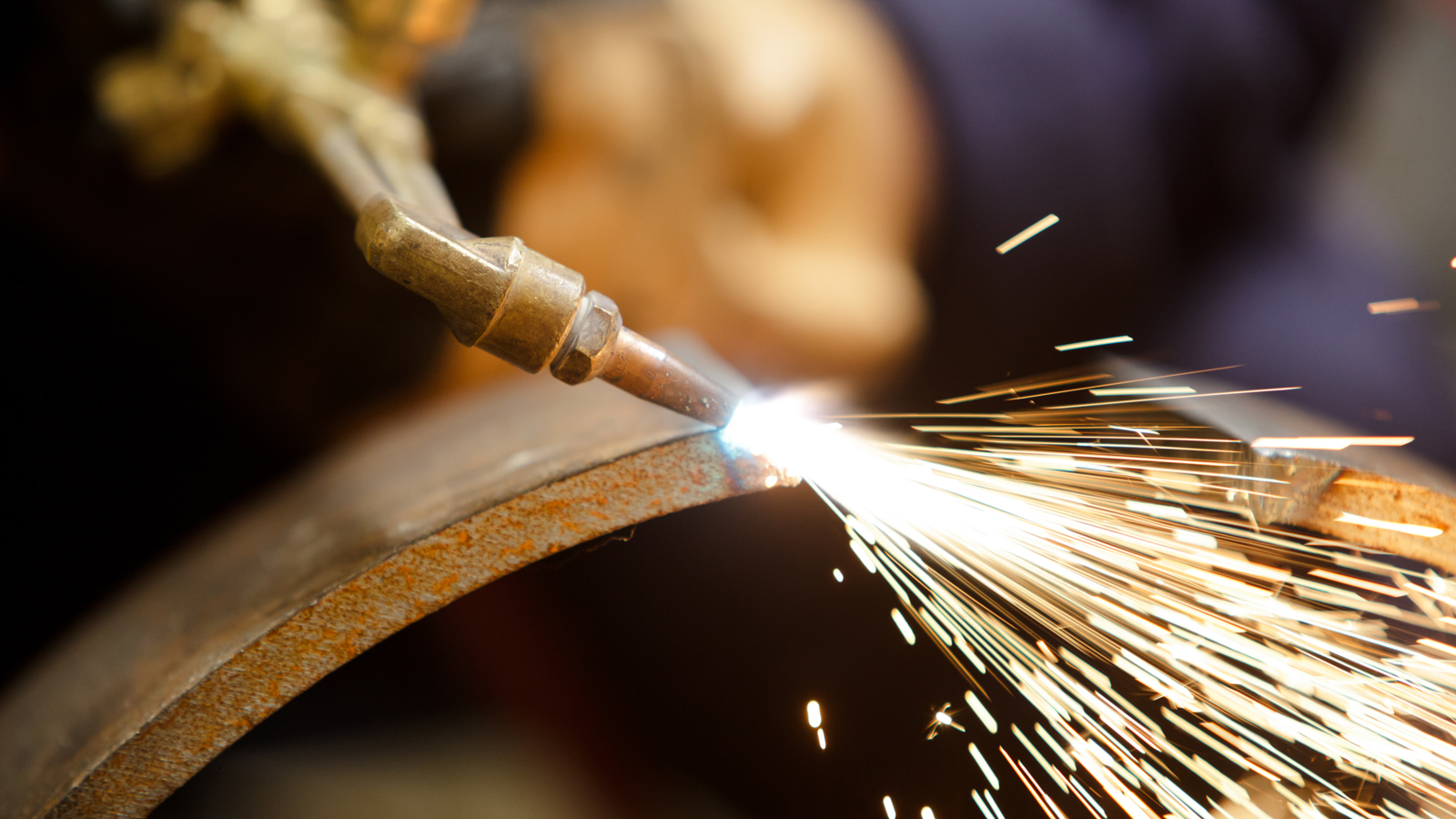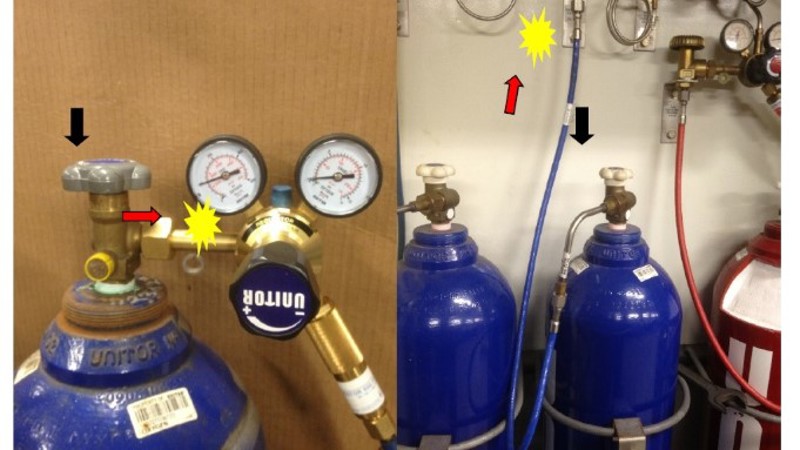
Understanding the danger of Adiabatic Compression
The most likely accident handling and operating oxygen cylinders and its equipment is a phenomena called adiabatic compression
Adiabatic compression (“GAS HAMMER” effect/ Metal fire)
Oxygen at 99.5% purity under high pressure (150 bar) has strange properties. When a valve of an oxygen cylinder is opened quickly, the oxygen will rush into the high-pressure hose or the stem of the oxygen regulator and when reaching the end of the hose or regulator phenomena called, adiabatic compression might occur.

This means that locally the pressure will for a short period be much higher than the filling pressure of the cylinder (150 bar). This compression happens without any heat input from the outside (hence the name adiabatic). The effect of this is that locally compression heat is generated. The net result is that for a very short time we can see a higher than normal pressure and an increased temperature. This higher oxygen pressure and temperature makes it more critical what products are in contact with the oxygen.
Products that are normally considered as non-flammable can when in co ntact with high pressure oxygen at higher temperatures become flammable. Any foreign object, organic or a metal particle might ignite and start a metal fire.
The high pressure have under those circumstances no problem burning through the hose or regulator stem consuming it. For this reason are oxygen components specially designed and tested (oxygen surge testing) and cleaned fit for oxygen service. When replacing components like hoses and seals, attention must be paid to work “clean” so that possible flammable components (contaminants like dirt, fine particles, oil or grease) are not transferred. If small amounts of contaminants are present and the oxygen surge happens, ignition will occur instantaneously (explosive) and the hose or regulator stem will fail.
Because of the above-mentioned process, our instructions are (and have always been) no foreign substances to be used, and always slowly open the cylinder top valves. In test performed Teflon do not ignite at 21% oxygen even at 9500 psi (655 bar), but as oxygen concentration increases there is a dramatic change in the ignition threshold (Auto Ignition Temperature AIT) culminating in ignition of Teflon in 100% oxygen at 1500 psi (104 bar)
In order to avoid Adiabatic compression:
1. Use only original equipment and spares when handling/ servicing oxygen equipment.
2. Open and close oxygen cylinder top valves before connecting equipment. This in order to remove any foreign items and hence preventing them entering the system.
3. Work clean. No oil or impurities must contaminate the parts (your hands, tools etc.).
4. Open oxygen cylinder top valves slowly.
Additional information:
Diesel engines rely on adiabatic heating during their compression stroke to elevate the temperature sufficiently to ignite the fuel. Similarly, jet engines rely upon adiabatic heating to create the correct compression of the air to enable fuel to be injected and ignition to then occur.
Download Technical update - Understanding the danger of Adiabatic Compression